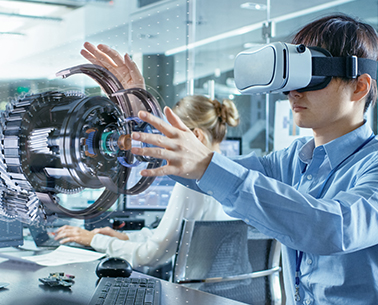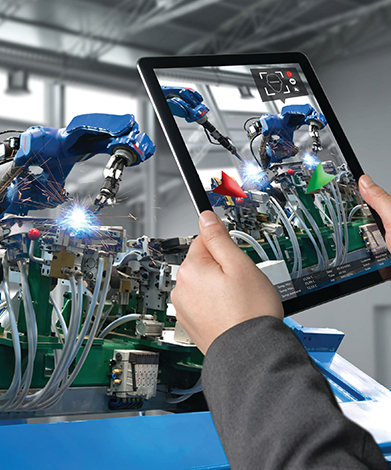The era of Immersive Manufacturing
The mainstream manufacturing industry is centred around efficiency and productivity. But in order to thrive in a competitive business environment, the manufacturing processes need to be more systematic, economic and innovative. The advent and applications of Augmented, Virtual and Mixed reality has hugely transformed the way manufacturing is carried out, right from design and visualization of processes to machinery maintenance and workforce training. Digital Reality has brought value to enterprises of all scales in multiple domains by revolutionizing manufacturing, leading to optimization of operations and saving of costs.
The digitization of Manufacturing
As per a report, the AR and VR market in manufacturing was valued at $1.96 billion in 2017, which is estimated to grow to $90.14 billion by 2025, at a CAGR of 61.4%. North America was the highest contributor to this market, with $0.74 billion in 2017, and is anticipated to reach $24.74 billion by 2025, registering a CAGR of 55.1%. USA in particular had the largest share of the digitized manufacturing market in 2017 at 26.5% and is estimated to continue being the largest contributor in 2025 at a projected 18.1%. Asia-Pacific is anticipated to reach $34.88 billion by 2025 at a CAGR of 64.7%. With the adoption of Digital reality, an incremental rise is being forecasted, increasing the share of digitized manufacturing to 25% of the total pie by 2022.


Augmented and Virtual Reality in Manufacturing
With the rapid increase in adoption rate, it is clear that AR, VR and MR technologies are bringing new ways of enhancing manufacturing capabilities throughout the product lifecycle. The industry is benefiting from the implementation of digital reality in more than one way. Augmented Reality has created a platform for real time instructions for assembly and configuration, overlaying design components onto existing modules, digital viewing of the equipment design as well as visualizing specific components and functions beyond physical barriers. On the other hand, virtual reality assists in creation of product twins to simulate the real-world environment, remote collaborations across locations, simulating human motion for a process to engineer alternative actions and virtual walk throughs & immersive inspection of plants. Virtual reality also offers a more immersive way of imparting on the job and safety training to the workers. These practical applications help the teams by saving time through better planning, reducing errors & complexity through accurate testing and increasing efficiency, safety and productivity.
The way forward for Manufacturing with EDIIIE
The applications and benefits of Digital reality are enormous, that are bound to get more conspicuous as the technologies mature. At EDIIIE we are constantly innovating and creating new digital reality prospects in the manufacturing sector. Through our revolutionary industry solutions, we strive to always stay ahead in the game and deliver maximum value to our clients.







.png)































